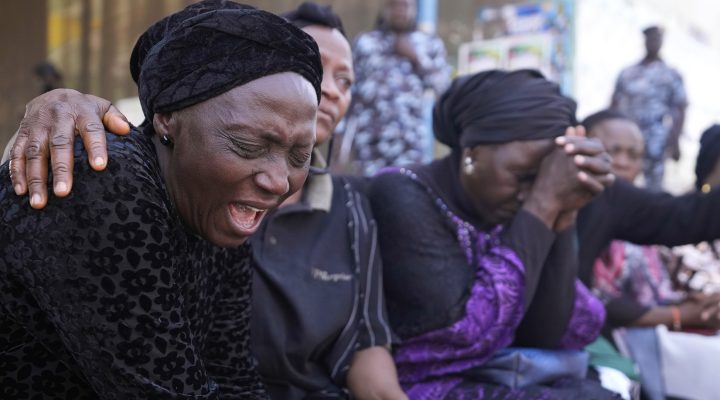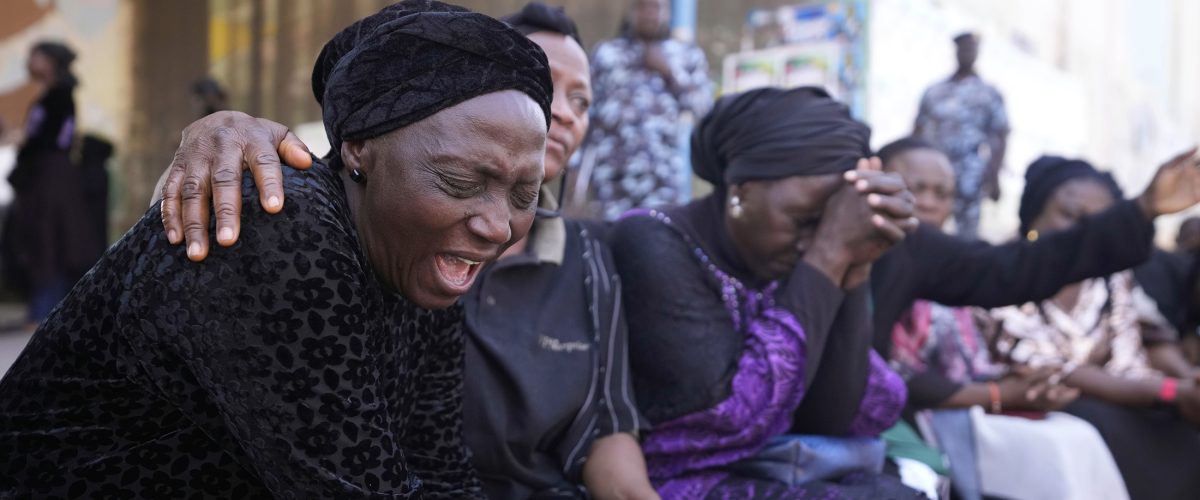There’s a perception that numbers matter, and so, the more problems there are in a place, the more interest they arouse.
Not so in the case of disasters in Africa in the last year compared to what’s seen of the war in Gaza, and before it, Ukraine.
Although the trouble spots in Africa in the last 12 months outnumber anything seen in the Middle East, Europe, Asia, North America, Australia or elsewhere, they attract little attention from the media and some international humanitarian agencies.
Many foreign media and international agencies are fixated almost exclusively on Gaza, the Palestinian territory where Israeli military continues its operation of trying to wipe out the Hamas terrorist group that was responsible for the October 7 attack in Israel. That war now has claimed more than 40,000 lives — mainly Palestinians.
Reporters and media outlets provide on-the-ground live reporting of the battle and its impact on the populace and environment. But we don’t see similar coverage from Africa.
It’s simply about the powers that be choosing to focus on what they consider necessary. Africa lags in the pecking order even as the statistics show it should come first on the scale of devastation.
“Africa lags in the pecking order even as the statistics show it should come first on the scale of devastation.”
As bad as the situation in Gaza is, it may be compared to only one trouble spot in Africa.
According to the Armed Conflict Location and Event Data Project, since the outbreak of war in Sudan on April 15, 2023, caused by a power struggle between two high-ranking officials overseeing the Sudanese Armed Forces and paramilitary Rapid Support Forces, the agency recorded 8,109 events of political violence and more than 24,850 fatalities.
Comparatively, the onslaught in Gaza has killed at least 44,545 people but in terms of displaced people, the number on the Sudanese side is higher. According to the Council on Foreign Relations Global Conflict Tracker, since the beginning of the Sudan conflict, “more than 8.2 million have been displaced, giving rise to the worst displacement crisis in the world.”
Nearly 2 million displaced Sudanese have fled to unstable areas in Chad, Ethiopia and South Sudan, overrunning refugee camps. The U.N. continues to plead for more support for Sudan “as more than 25 million need humanitarian assistance, and deteriorating food security risks are triggering the world’s largest hunger crisis.”
In the Gaza conflict, nearly 2 million Gazans — more than 85% of the population — have fled their homes since October 2023.
Again by comparison, the United Nations refugee agency, UNHCR, reports that “at the end of 2023, 10.8 million Sudanese remained uprooted. In the Democratic Republic of the Congo and Myanmar, millions were internally displaced last year by vicious fighting.”
UNRWA estimates that by the end of last year, up to 1.7 million people (75% of the population) had been displaced in the Gaza Strip.
But the situation in Africa, taken from a larger perspective, is even worse.
Besides Sudan or Democratic Republic of Congo, a number of African countries have had to grapple with conflict over the past year or seen a spike in violent activities, leading to death and displacement of citizens. The conflicts, even where related to climate change such as the struggle for pastureland between nomadic herders and farmers, usually have a religious undertone to them — particularly in countries like Burkina Faso and Nigeria.
“The reality is far worse than anyone could have ever imagined.”
“The reality is far worse than anyone could have ever imagined. This is because Christians face violence and death from terrorist groups like Boko Haram and Muslim Fulani militias, who target and kill them,” wrote Sean Nelson, legal counsel for Global Religious Freedom of his experience visiting Nigeria. “Thousands of innocent men, women and children are suffering under the grip of persecution.”
He continued: “During my recent trip to Nigeria, I visited sites that had become epicenters of unspeakable violence. On Christmas Eve 2023, armed militants invaded five villages, violently shattering what should have been a night of joy and celebration. Roughly 200 villagers lost their lives in the chaos, leaving behind heartbroken loved ones. I visited a church where assailants targeted a pastor and his family, burning their home, killing and beheading the pastor.
“Although difficult for many to comprehend or even imagine, acts like this are real and are affecting many of our brothers and sisters over in Nigeria. When I met with the survivors, I learned I was the first Westerner to visit them and witness their tragedies. We need to act now to ensure they know they are not forgotten.”
This is not to take away from the atrocities happening in Gaza and Israel. The point is that the rest of the world only sees some of the globe’s conflicts and not others.
In a report commemorating World Refugee Day, the Institute for Security Studies noted: “Many long-term African crises are chronically underreported, underfunded and under-addressed, regardless of severity. Extremism, political instability, violence and human suffering thrive in negligence.”
Of the reported 120 million people forcibly displaced worldwide this year — up from 35.8 million in 2012, according to UNHCR’s annual Global Trends Report, 37% (45.9 million) of those are in Africa, comprising around 8.9 million refugees, 1.1 million asylum seekers, 35 million internally displaced people and 1 million stateless people.
The Norwegian Refugee Council reports that nine out of the 10 most neglected displacement crises in the world in 2023 were in Africa. These include Cameroon, Congo, Niger, Mali, Chad, South Sudan, Central African Republic, Sudan and Burkina Faso.
“Behind these stark and rising numbers lie countless human tragedies,” said Filippo Grandi, U.N. high commissioner for refugees. “That suffering must galvanize the international community to act urgently to tackle the root causes of forced displacement.”
 Anthony Akaeze is a Nigerian-born journalist living in Houston.
Anthony Akaeze is a Nigerian-born journalist living in Houston.


